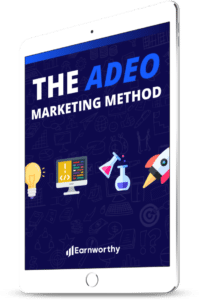The first step in improving any website’s performance is conducting a conversion audit. CRO (conversion rate optimization) requires a deep understanding of how visitors experience and navigate your website, and a conversion audit can help you along the way.
Furthermore, when done correctly, it helps you acquire the information necessary to move forward with your CRO planning. It’s a crucial step, and in this article, you’ll learn how to perform one in five minutes, providing that the right tools are in place.
What you’ll need to become a Jedi-like conversion auditor
You’ll need the following 5 things in place to do a conversion audit:
Landing Page — You have a landing page or minimum viable product (MVP) that you’re promoting.
Traffic — The web page(s) you’re promoting should have regular incoming traffic.
Audience Persona — You must have an understanding of your target customer. When the target audience doesn’t match the current makeup of incoming traffic, the likelihood of successful conversions becomes astronomically low.
Quantitative Data — You’ll need access to analytics and reporting software, such as Google Analytics.
Qualitative Data — You’ll need a completed heatmap or session recording snapshot via Hotjar or other behavior analytics software. Note that a session recording snapshot will likely increase the time it takes to finish the audit because you have to review several videos.
With all of that in place, let’s get started.
1. Identify the purpose of the page
Why does the product or landing page exist? What do you want prospects to do? How are you convincing the audience to take the desired action?
Understanding the exact purpose of a page is the first step in any conversion audit.
2. Does the page help the user do what you want?
Is the page doing a good job of leading prospects to the desired action? How well is the conversion path laid out on the page?
For example, if part of your sales process is to capture email addresses first, the page should do that well. Additionally, think about ‘conversion black holes’ or things that may prevent a click from occurring.
For instance, you may need to adjust the CTA (call-to-action) button location to grab more users’ attention.
3. What are people currently doing?
The prime reason for low conversion rates is that people aren’t taking the desired actions, be it subscribing to your email list or filling out a contact form.
So, what are people doing on the page?
You can find out by using a heatmap or session recording software. Hotjar is one of the best CRO enablers out on the market, and it offers both heat mapping and session recordings.
A heatmap shows you which areas of your page are getting the most attention from visitors. Session recordings allow you to see exactly how people experience the page – don’t worry, it’s all legal.
With such information, you can adapt or make tweaks to your pages, so each one effectively leads users to conversion.
To help you spot opportunities, here are some of the things people do on non-converting web pages.
Users click away immediately after arriving on the page — This might indicate that your page is receiving the wrong kind of traffic.
Many users click through to other pages on your site — The most likely cause is that you have too many distractions on the page.
People click away after scrolling through the whole page quickly — Usually an indication that users can’t find the information desired.
When the action you want prospects to take isn’t the best option, a conversion will not occur.
4. Where is your traffic coming from?
Examine your analytics, specifically demographics, and traffic sources. If you’re targeting a local audience, your overall traffic should reflect that by more than 80 percent.
Similarly, if your target customers are people from the United States interested in fashion, traffic should reflect that intended audience.
You can gain enormous insights on what needs to change by identifying which traffic sources are converting better than others and analyzing demographics data.
5. Look at the site’s usability
A badly designed website will drive customers away — you’ve probably run away from a few sites before due to aesthetics. So, take a look at how usable your landing page or website is; go through the entire customer journey to experience the page as users do.
For instance, if your goal is to win more purchases, read the page copy and follow the transaction steps.
How easy was it? How convincing was the web copy? Will you buy the product or complete the desired conversion?
Wrapping Up
A conversion audit’s primary purpose is to identify problems (usability or technical) that are hindering your website from reaching its conversion potential.
If you have all the tools in place, you can successfully conduct a conversion audit within minutes.
Or, if you’d rather delegate this crucial task to a team of conversion optimization experts, we’re happy to help! In fact, conversion audits are one of our core specialties.
💡 Learn more about our conversion audit services HERE and schedule a free strategy call today.





